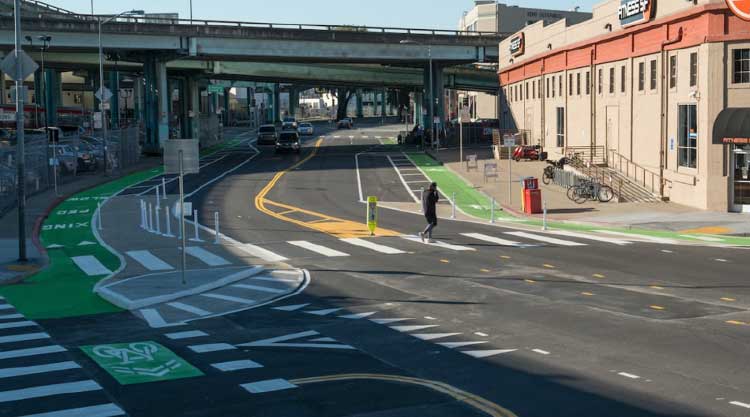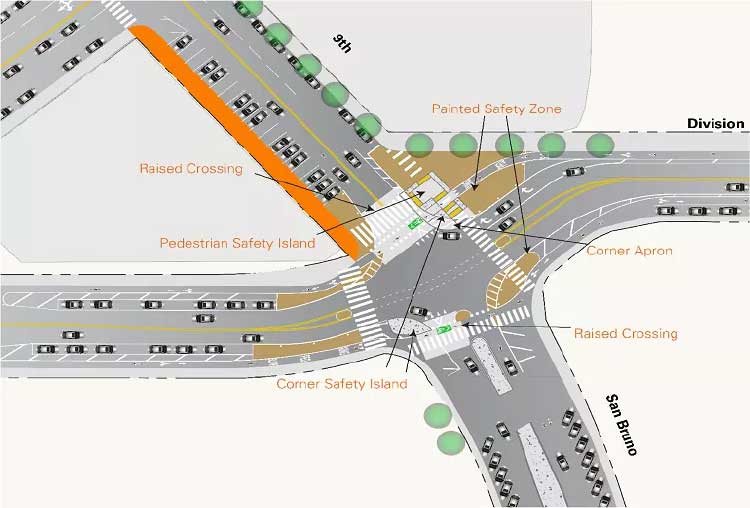Over the past month, San Francisco and Berkeley opened the first two protected intersections in the Bay Area.
These innovative Dutch-inspired designs (amongst the first dozen built in the U.S.) seek to maintain physical separation between drivers and bicyclists through an intersection.
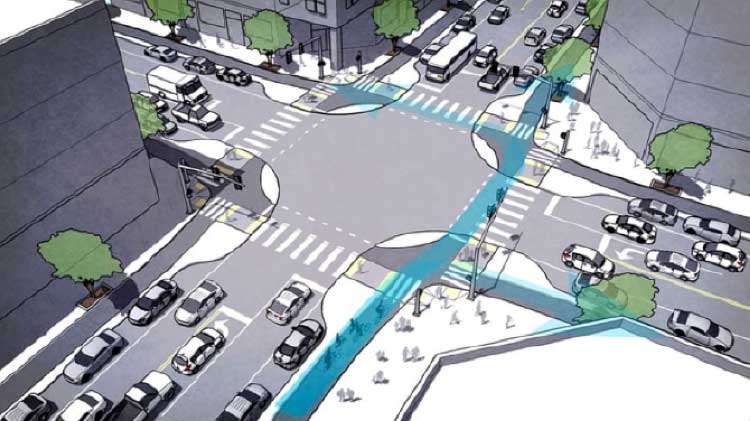
(Source: protectedintersection.com)
Protected intersections include four main elements to enhance physical separation, traffic calming, and visibility:
• A corner refuge island, which acts as a curb extension to provide bicyclists a secure refuge to wait at a red light and physically separates bicyclists as they make right turns.
• A forward stop bar, which improves visibility of bicyclists for drivers, provides a head start for bicyclists, and reduces exposure to cars.
• A setback bicycle and pedestrian crossing, which enhances reaction time for all users and allows drivers to cross at a perpendicular angle and slow speed for maximum visibility.
• Bicycle-friendly signal phasing, which allows for a leading bicycle interval, or in some circumstances, a dedicated bicycle phase.
Both of the Bay Area’s protected intersections are a little unconventional. At the intersection of Hopkins and The Alameda in Berkeley, the design emerged from creative solution for installing lower-cost pedestrian bulbouts as a part of a safe routes to schools project.
The design serves conventional (rather than protected) bike lanes and lacks high-visibility “crossbike” conflict zone markings, so users of the intersection have experienced a bit of a learning curve.
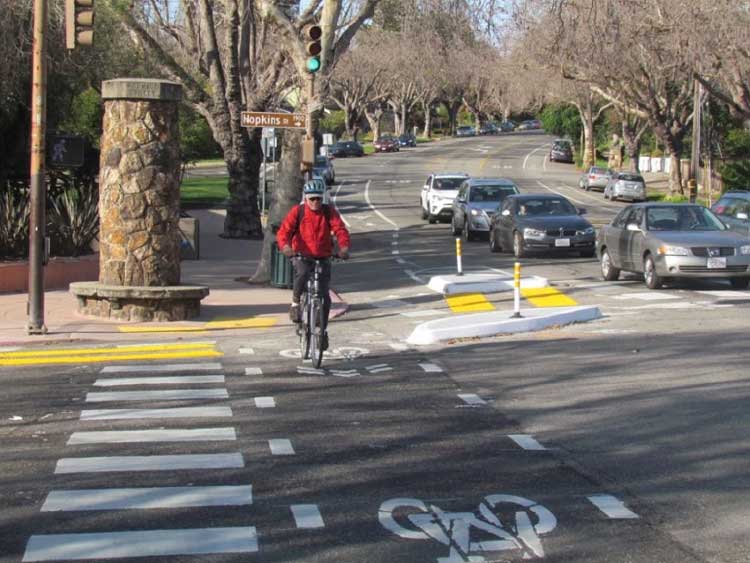
(Source: Melanie Curry, StreetsblogCal)
At the intersection of Division, 9th, and San Bruno in San Francisco, the SFMTA installed a protected intersection to improve bicycle and pedestrian safety at a dangerously oversized intersection where bicyclists make up one quarter of rush hour traffic.
This design, too, is a little unconventional: it only protects bicyclists riding east-west along Division, and includes a mix of concrete curbs and painted safety zones – a bit of an awkward layout that could use some planters for additional vertical separation. The curb radii are also rather wide, so it’s unclear whether all drivers will slow down and look out for bicyclists. Regardless, it’s still a significant improvement over the previous condition.
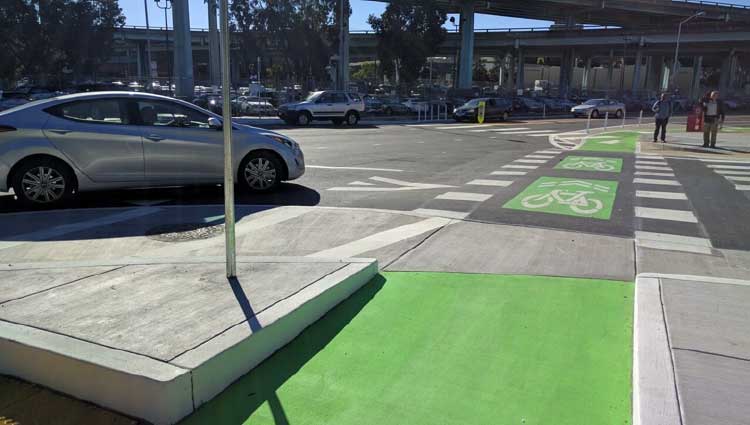
(Source: StreetsblogSF)
Protected intersections, paired with protected bike lanes, offer the potential to reshape the safety and comfort of bicycling in our cities. The performance and lessons learned from Berkeley, San Francisco, and elsewhere around the country will help cities further refine and improve upon these designs. Expect to see more protected intersections in the works across the Bay Area in 2017 and beyond.

